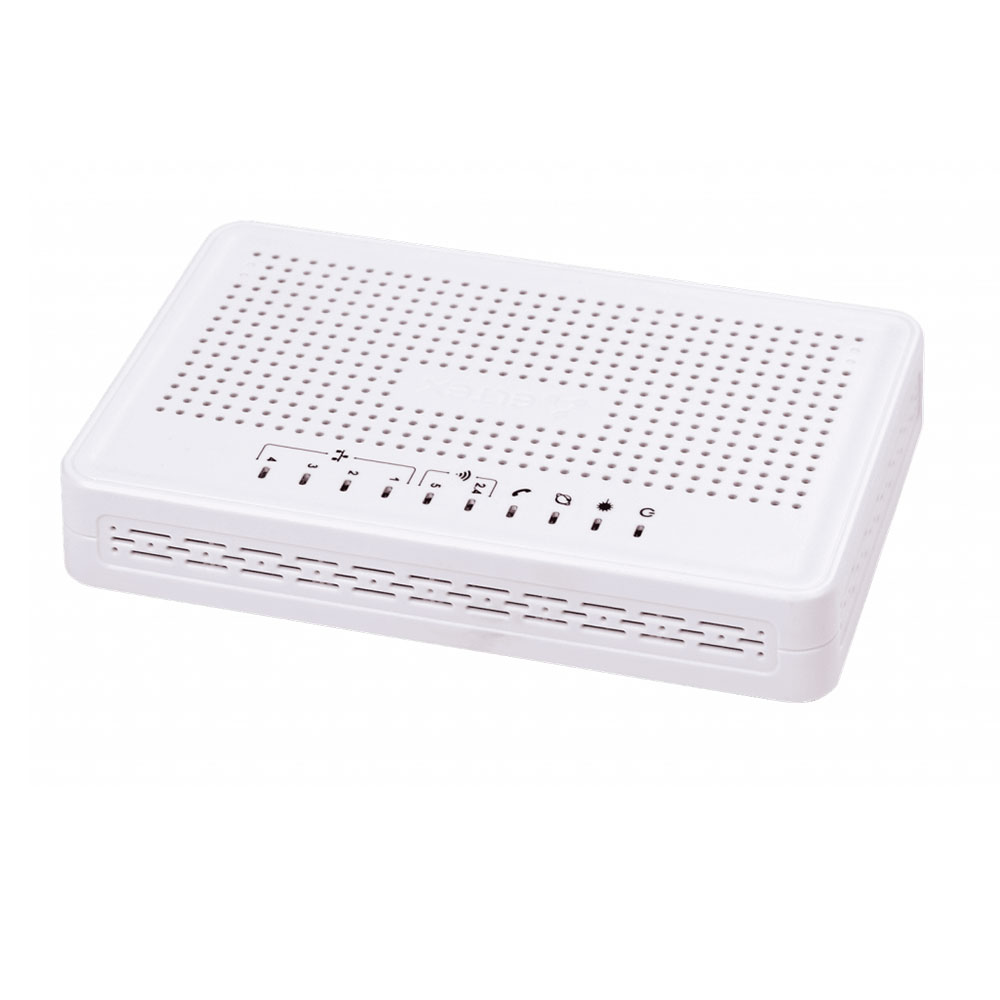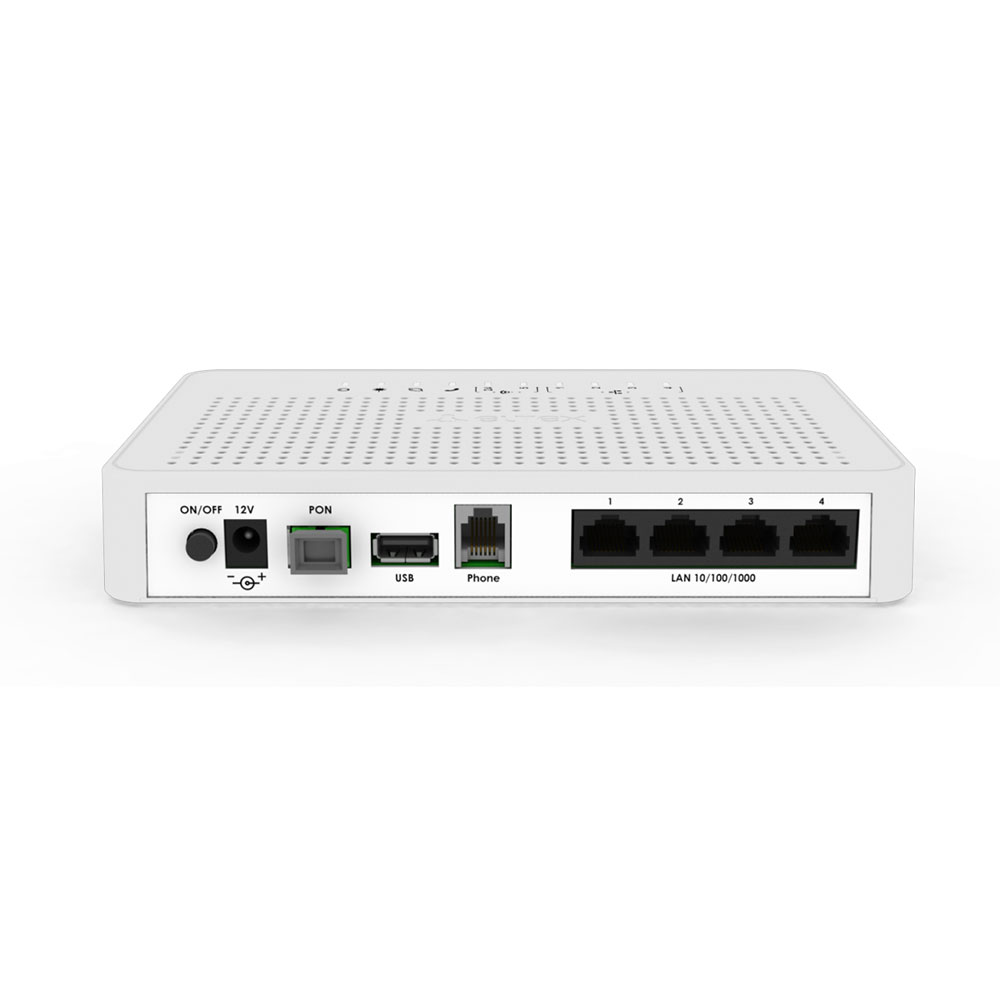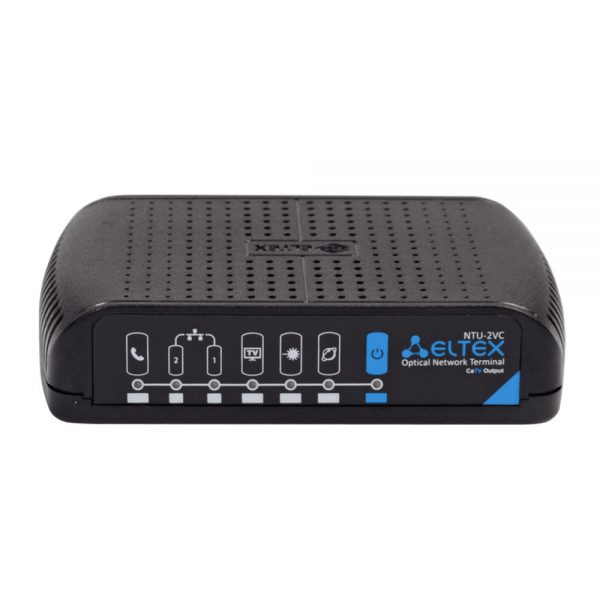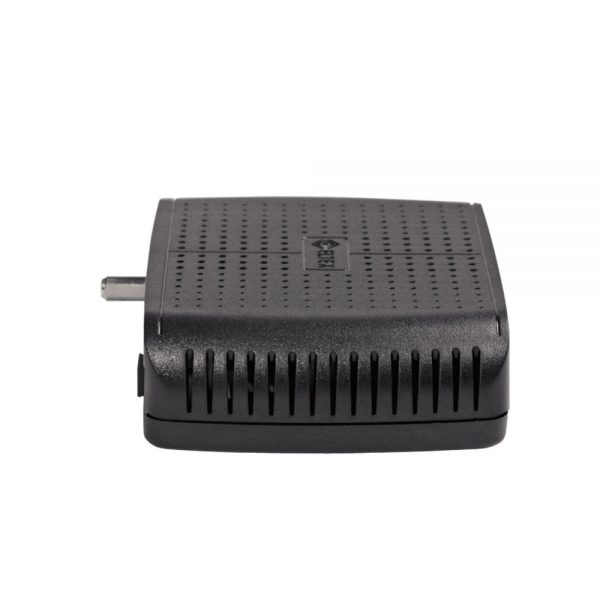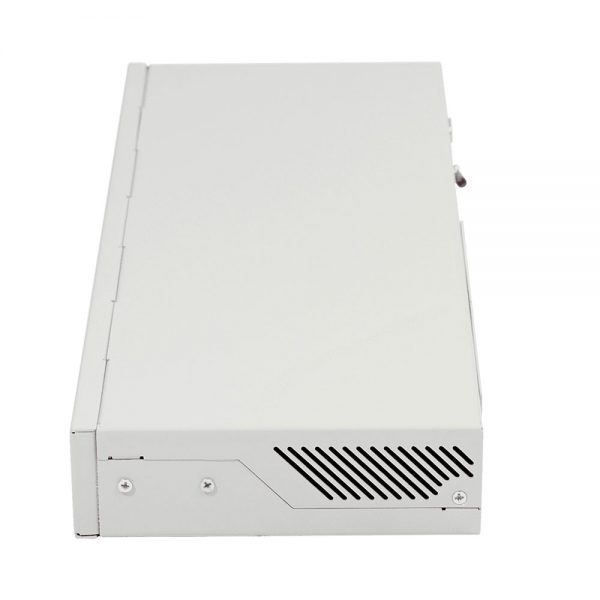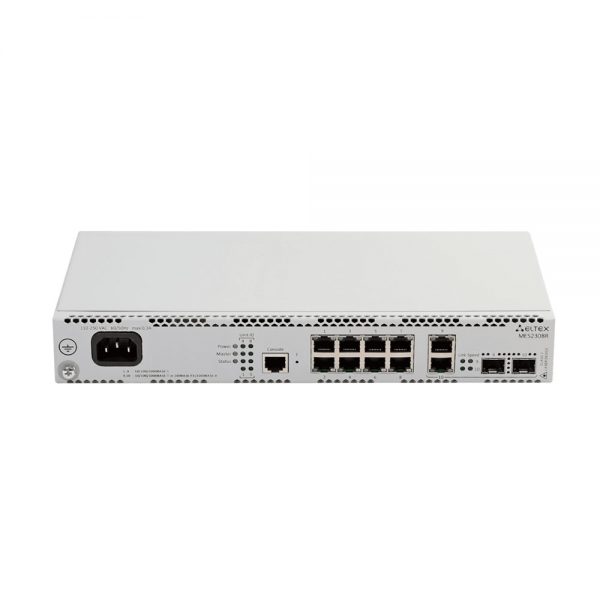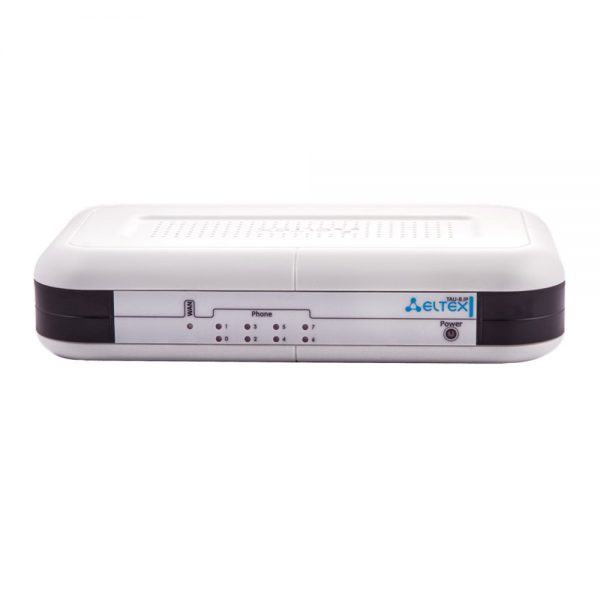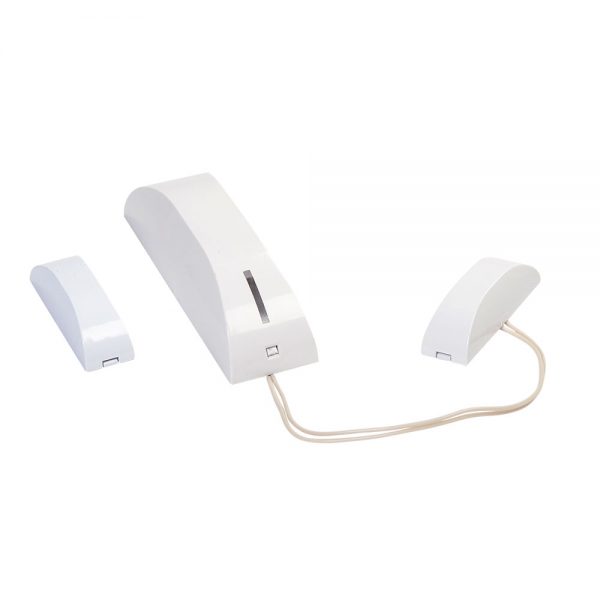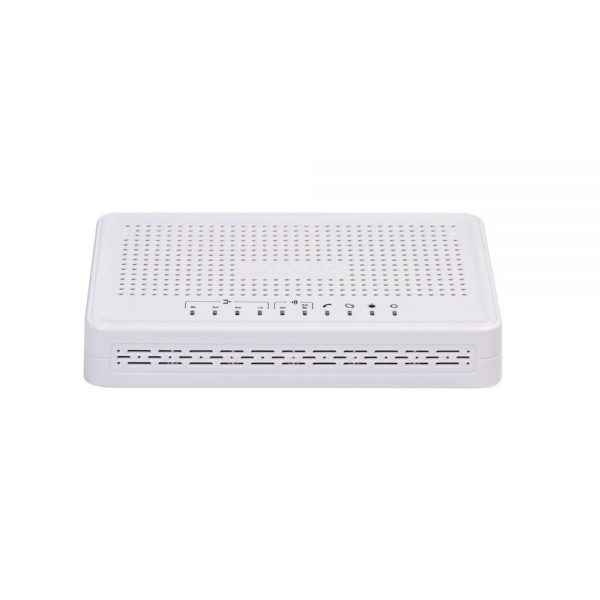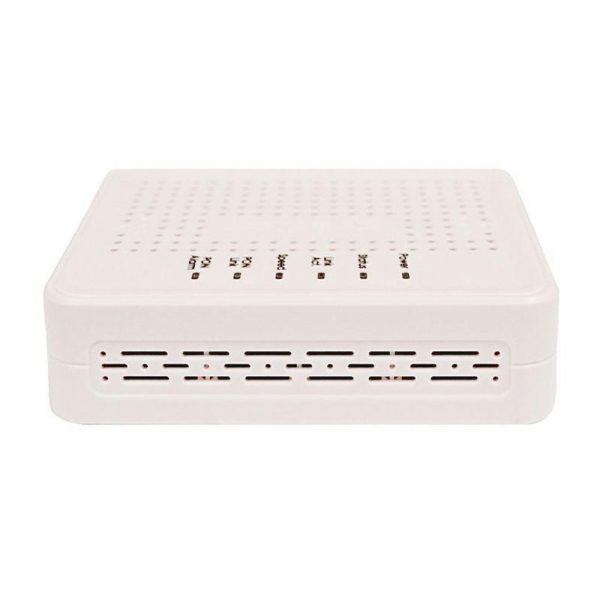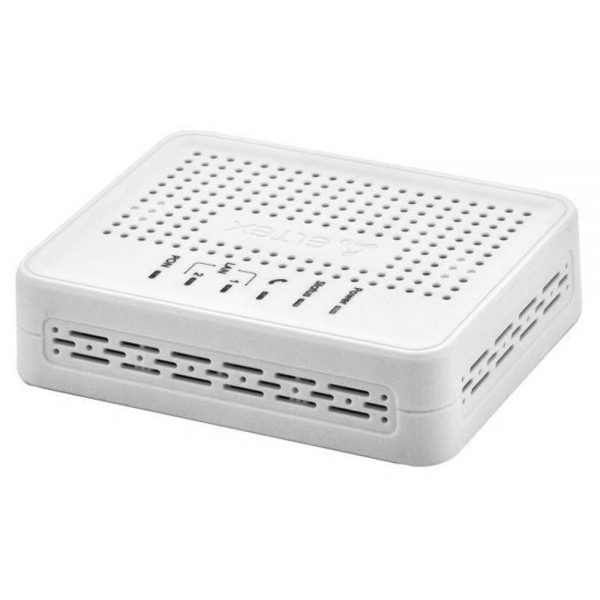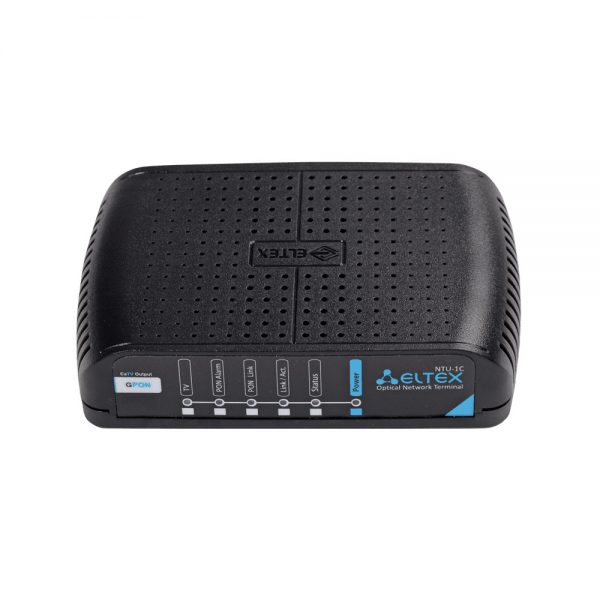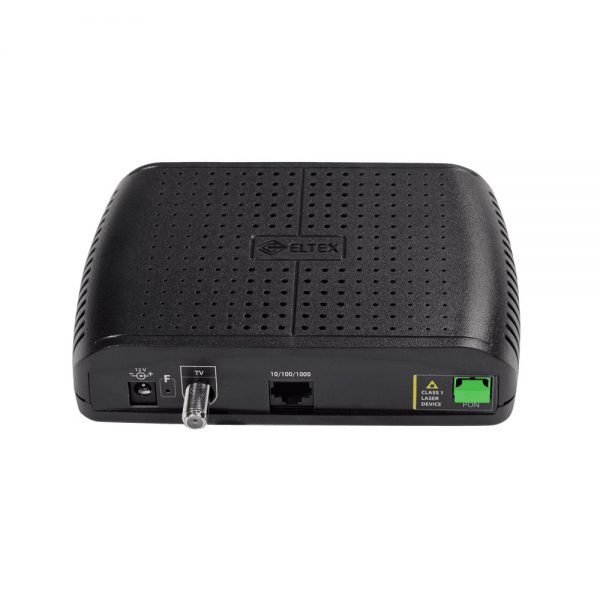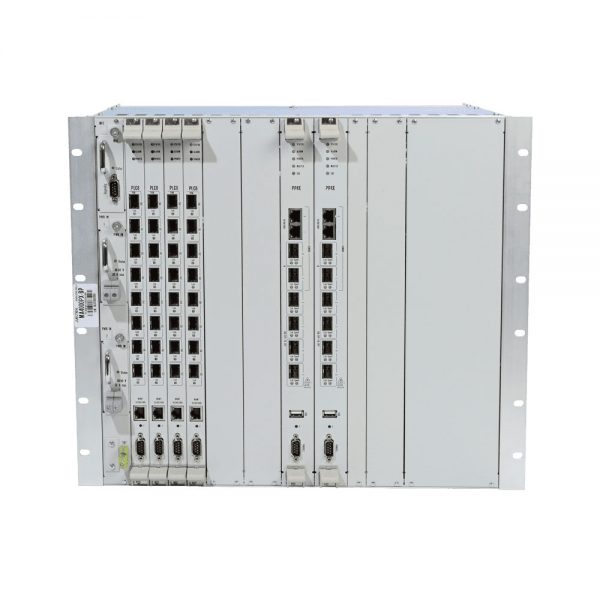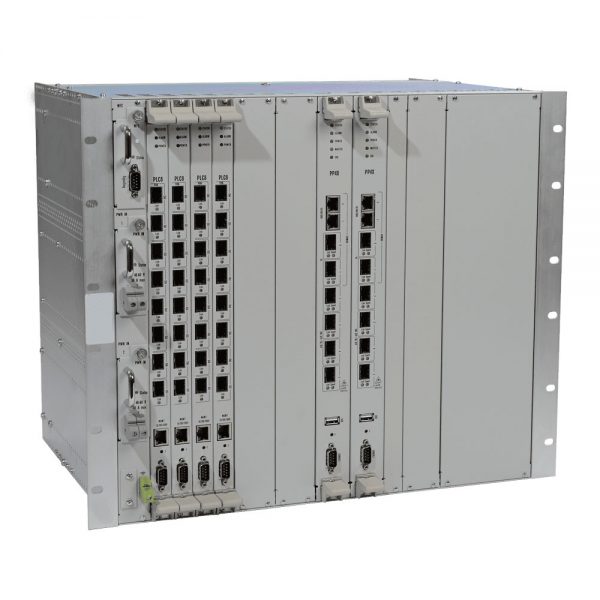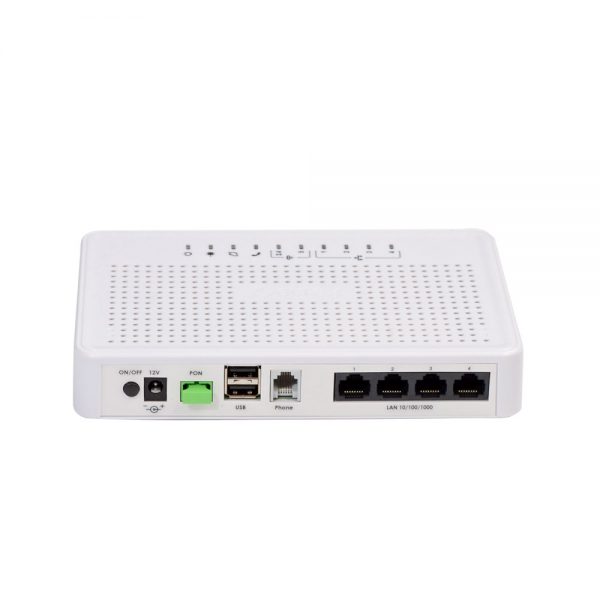PON interface parameters
- 1 GPON port
- Compliance with ITU-T G.984.2, ITU-T G.984.5 Filter, FSAN Class B+, SFF-8472
- Connector type: SC/APC
- Transmission media: fiber-optic cable SMF-9/125, G.652
- Maximum operating distance: 20km
-
Transmitter: 1310 nm DFB Upstream Burst Mode Transmitter
– Data Rate: 1244 Mbps– Average Launch Power: +0.5..+5 dBm– Spectral Line Width: 1 nm (-20 dB) -
Receiver: 1490 nm APD/TIA Downstream CW Mode Digital Receiver
– Data Rate: 2488 Mbps– Receiver Sensitivity: -28 dBm, BER≤1.0×10-10– Receiver Optical Overload: -4 dBm
LAN interfaces parameters
- 4 Ethernet 10/100/1000BASE-T (RJ-45) ports
FXS interfaces parameters
- 1 FXS port
- SIP
- Audio codecs: G.729 (A), G.711 (A/U), G.723.1
- Fax transmission: G.711, T.38
- Loop resistance: up to 2kΩ
- Supported dialing technologies: pulse and frequency (DTMF)
- Caller ID issuing
Wi-Fi parameters
- Supported standards: IEEE 802.11 b/g/n/ac
- Frequency range: 2400 ~ 2483.5 MHz, 5150 ~ 5350 MHz, 5650 ~ 5850 MHz
- Simultaneous Dual Band
- Modulations: CCK, BPSK, QPSK, 16QAM, 64QAM, 256QAM
- Channels
– IEEE 802.11b/g/n: 1-13– IEEE 802.11a/n/ac: 36-64, 132-165
- Data rates1
– 802.11b: 1, 2, 5.5 и 11 Mbps– 802.11g: 6, 9, 12, 18, 24, 36, 48 and 54 Mbps– 802.11ac: 130 Mbps (80 MHz)
- Maximum output power of the transmitter2
– 802.11b (11 Mbps): 17 dBm– 802.11g (54 Mbps): 15 dBm– 802.11n (MCS7): 15 dBm– 802.11ac (MCS0): 19 dBm
- Modulation schemes
– IEEE 802.11b: DQPSK, DBPSK, CCK
– IEEE 802.11g: BPSC, QPSC, 16QAM, 64QAM, OFDM
– IEEE 802.11n: BPSC, QPSC, 16QAM, 64QAM with OFDM
USB interface
- 1 USB 2.0 port – for USB device connection
“Smart home” interface
- Radio interface for “Smart home” system management
Physical parameters and environment conditions
- Dimensions (WxHxD) – 187x120x32 mm, desktop case
- Power supply: external DC adapter 12V/2A
- Maximum power consumption – 15 W
- Operating temperature: from +5 to +400С
- Operating humidity: ≤ 80%
Supported standards
- ITU-T G.984.x – GPON
- ITU-T G.988 OMCI specification
- IEEE 802.1D
- IEEE 802.1Q
- IEEE 802.1P
Specifications
- Support for TR-069
- “Bridge” and “Router” operation modes
- Support for PPPoE (auto, PAP, MSCHAP and CHAP authentication)
- Support for IPoE (DHCP client and static)
- DHCP server on LAN side
- Multicast traffic transmission via Wi-Fi
- DNS (Domain Name System)
- DynDNS (Dynamic DNS)
- UPNP (Universal Plug and Play)
- NAT (Network Address Translation)
- NTP (Network Time Protocol)
- Quality of Service (QoS)
- IGMP Snooping
- IGMP Proxy
- Support for SMB, FTP, Print Server
- VLAN in compliance with IEEE 802.1Q
Security functions
- Rate limiting per ports
- FEC coding
Configuration and monitoring
- According to TR-142:
– Remote management via OMCI– Remote management via TR-069
- Local management via WEB
- Firmware updating via: OMCI, TR-069, HTTP
¹ The maximum wireless data rate is defined according to IEEE 802.11n/ac standard. The real bandwidth can be different. Conditions of the network operation, environment, the amount of traffic, building materials and constructions as well as network service data can decrease the real bandwidth. The environment can influence on the network coverage range.
² The value of the maximum output power will vary according to the rules of radio frequency regulation in your country.



